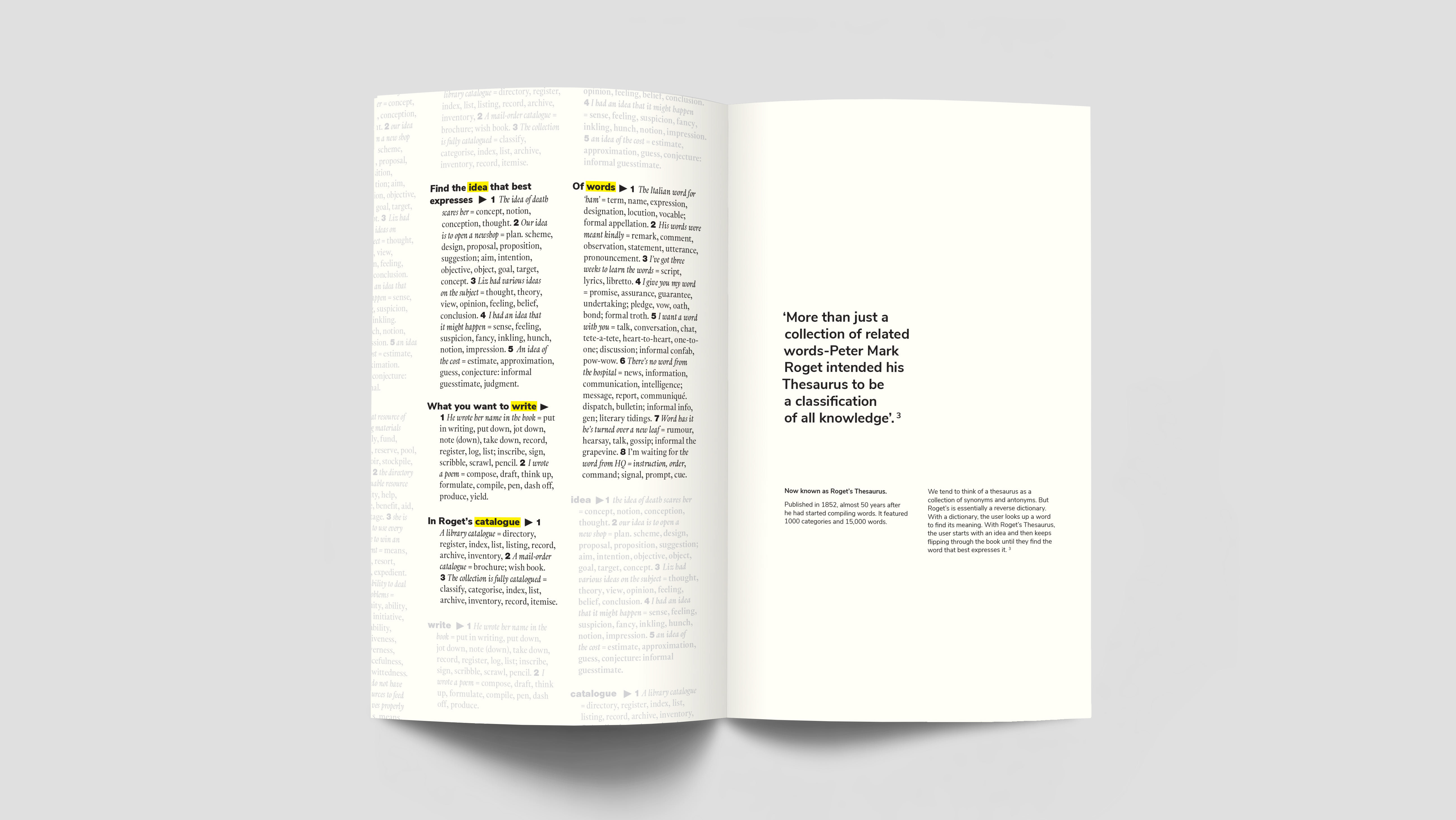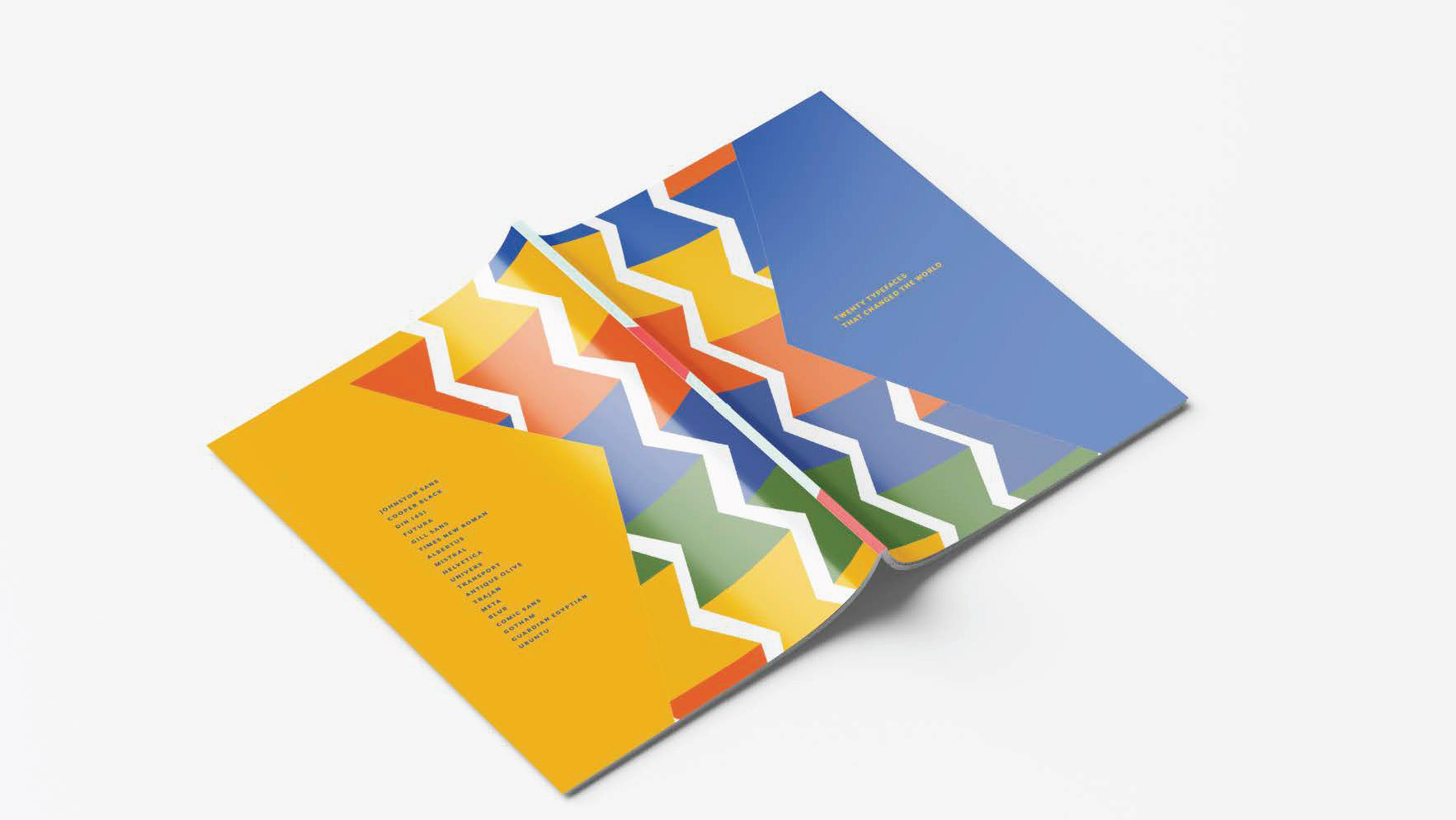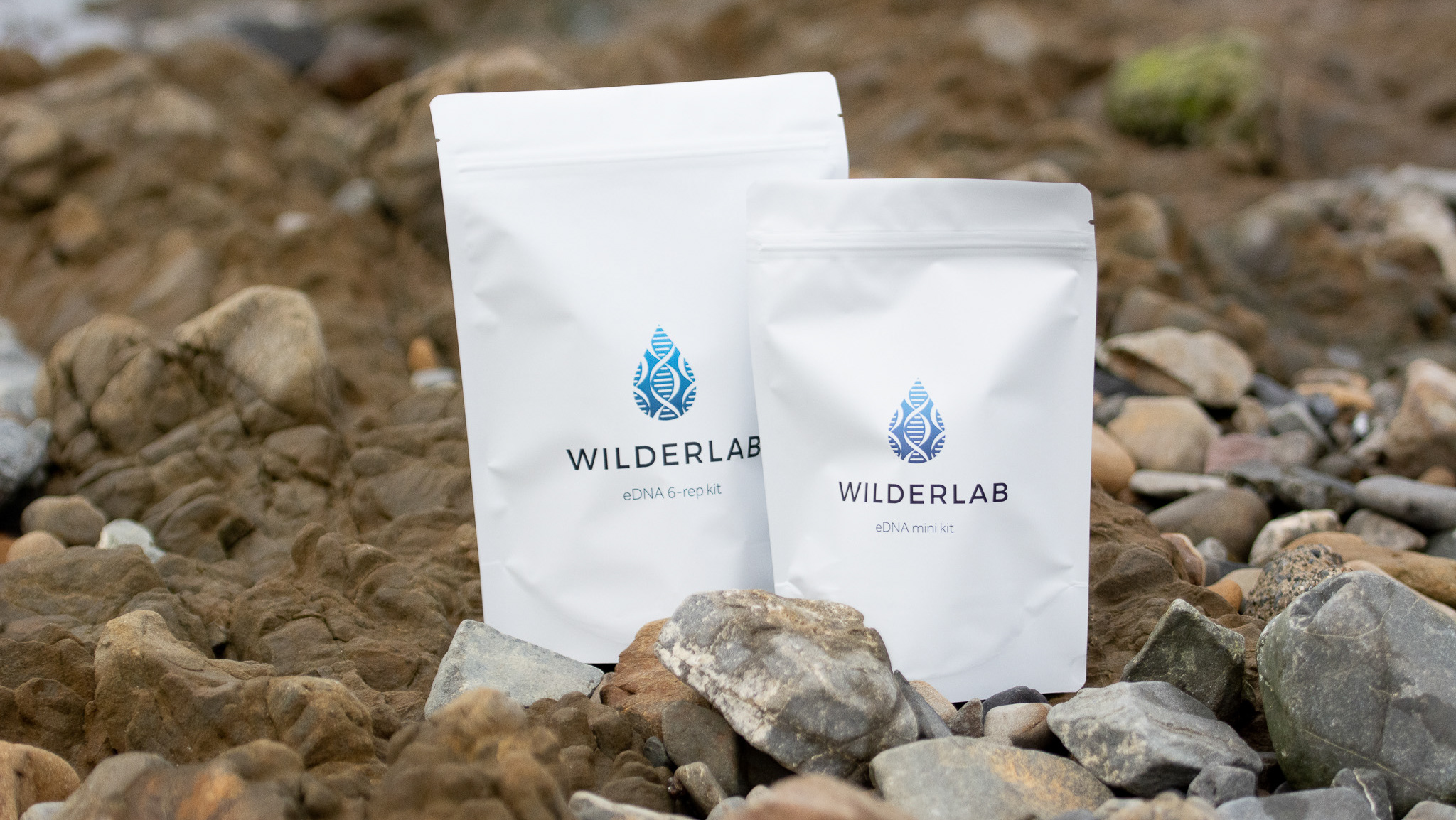Central proposition:
How can visual communication design educate New Zealand school children about freshwater ecosystem protection through environmental DNA?
How can visual communication design educate New Zealand school children about freshwater ecosystem protection through environmental DNA?
Aim:
Create a game-based science communication tool for broader eDNA education. It is aimed for kids aged 8+ and will be played in schools.
Discover, protect, restore. Use environmental DNA to discover New Zealand’s freshwater species. Build your own ecosystem, protecting it from risks you will encounter. Through my testing process, eRangers has a balance between luck and strategy. This allows kids as young as 8 to play it easily and older kids to get just as much enjoyment through the extra level of strategy. Everyone who has played the game has found it fun and educational. The game takes roughly 15 minutes, so playing several rounds is a good idea.
I have tested eRangers with kids aged 8-12, they have all picked up the rules very fast and have loved all the different species. One review I got from a 9-year-old was, ‘It was a fun and good quality card game’. He loved the cuteness of the cards and wondered if there could be a moustache on one of the species. The game consists of a box containing 108 cards, 1 rule sheet and 6 rule reminder cards. It goes along with an instructional video.
"The gameplay was the most challenging part of this project. From learning about different types of gameplay to spending countless hours testing and iterating rules and ideas."
Click below to explore my full design process
User research
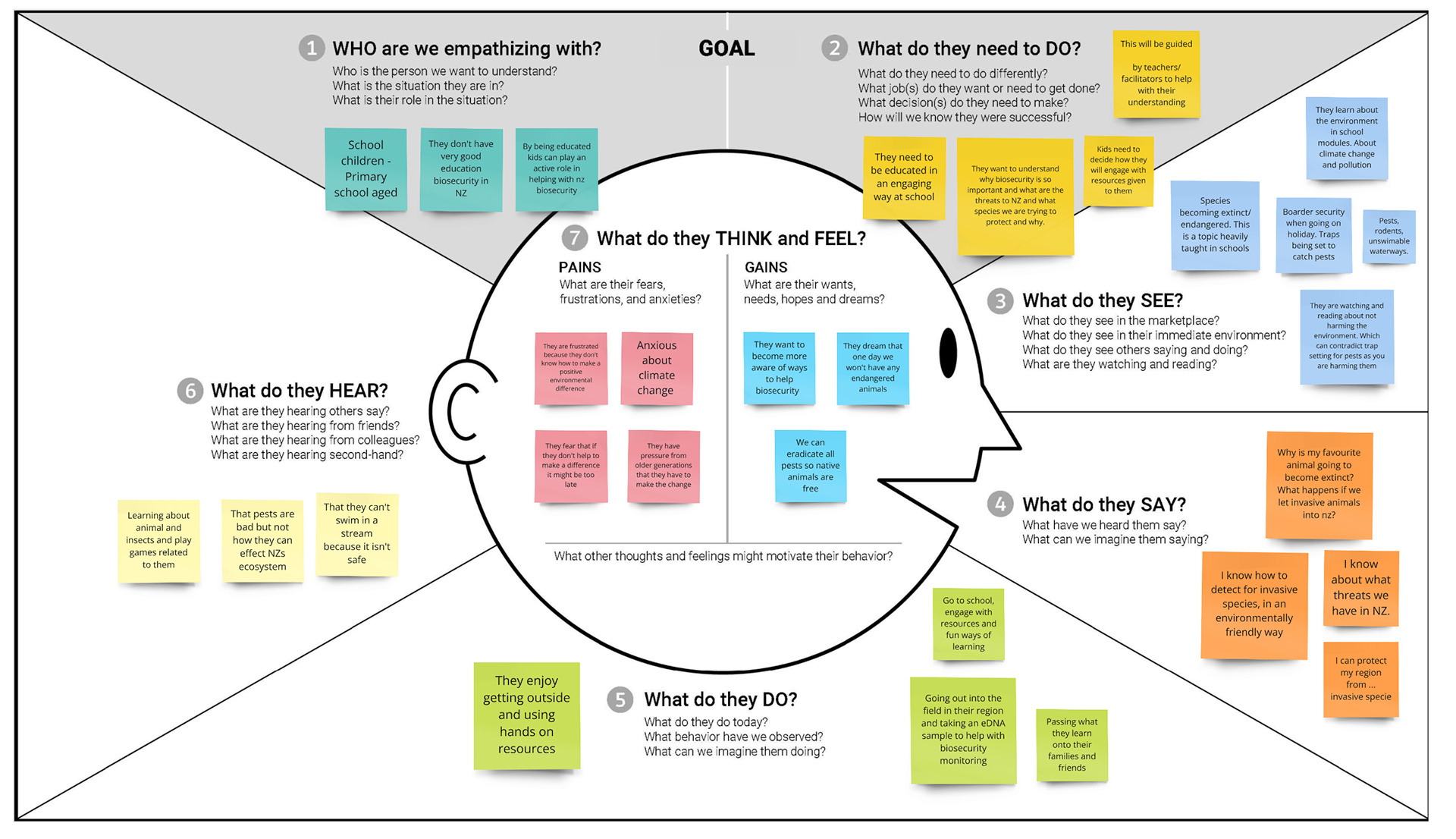
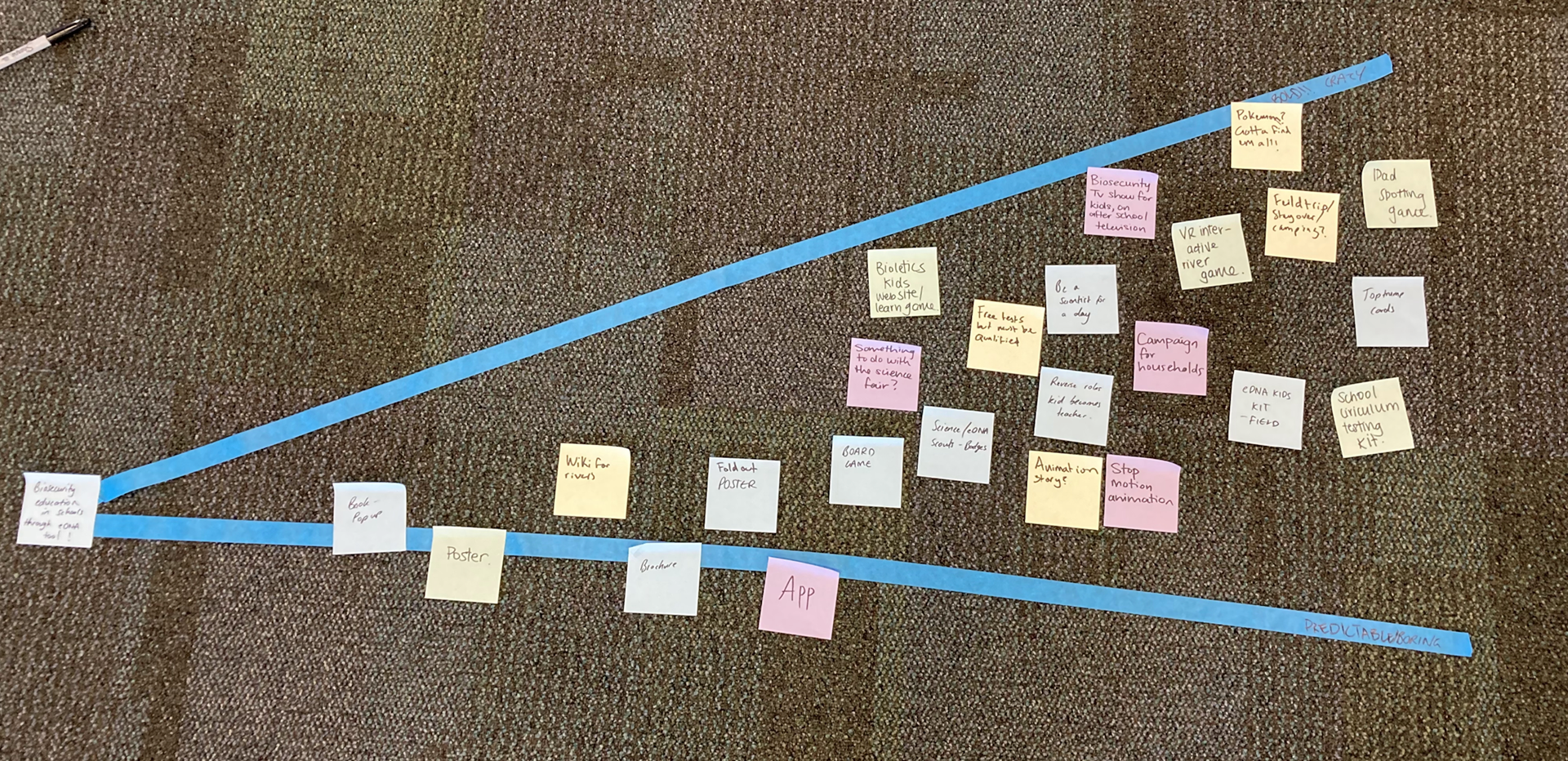
Field Trip
User Study
User Study
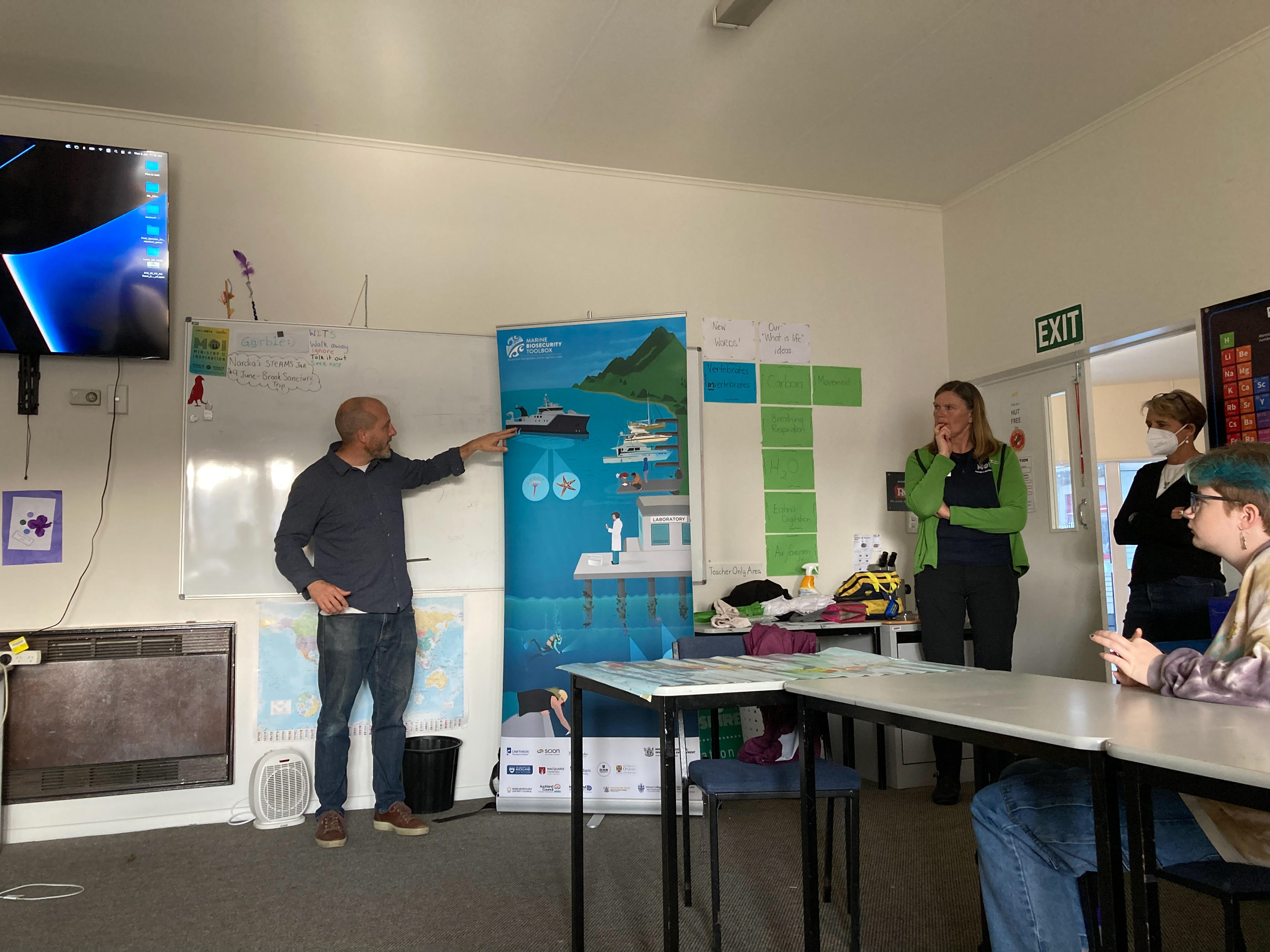
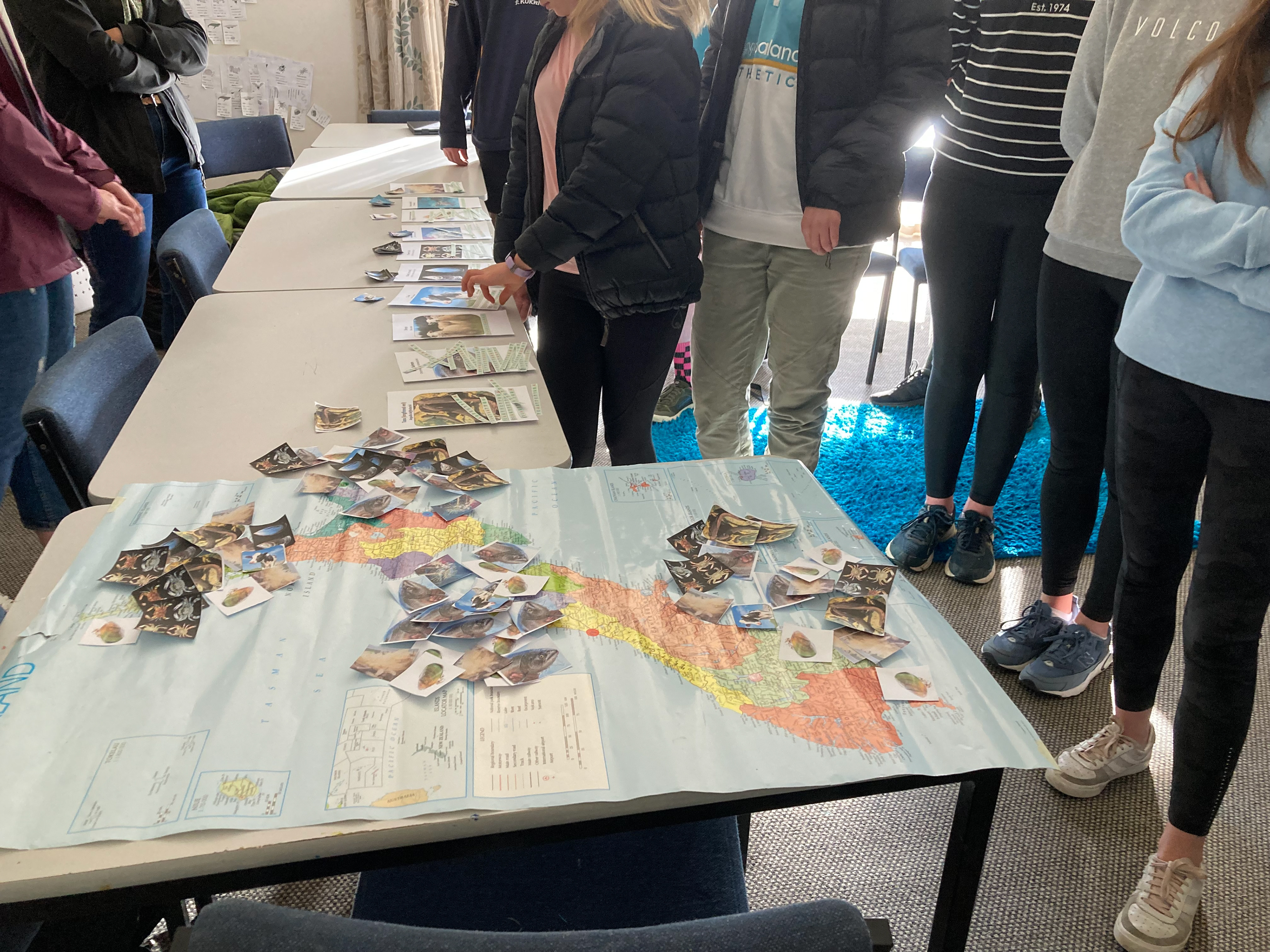
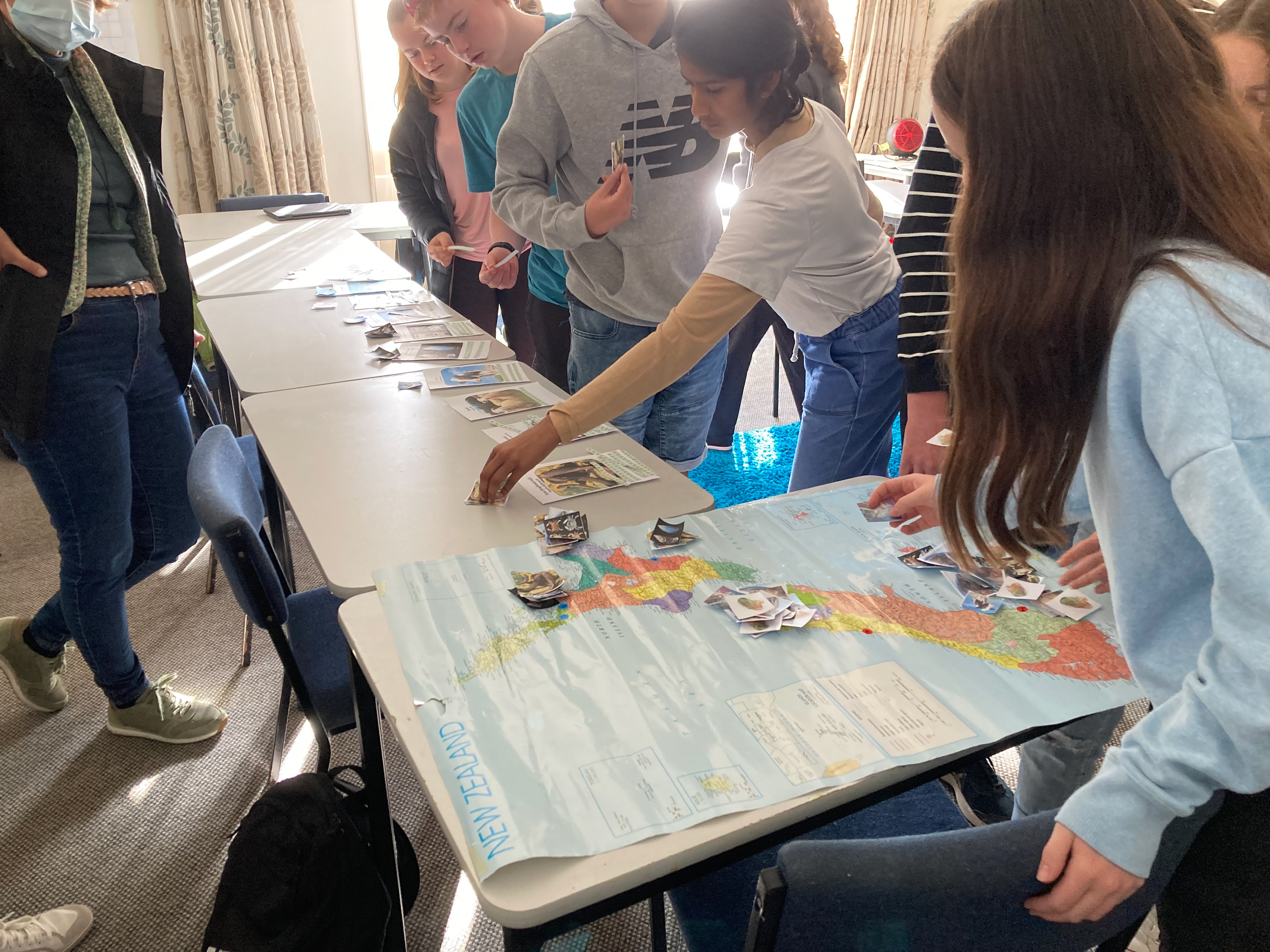


I went on a field trip with a class from a school in the South Island of New Zealand to observe how they interacted with science communication resources that they had been given. They played an educational which helped me gain further knowledge on gameplay as an educational tool.
Game Exploration


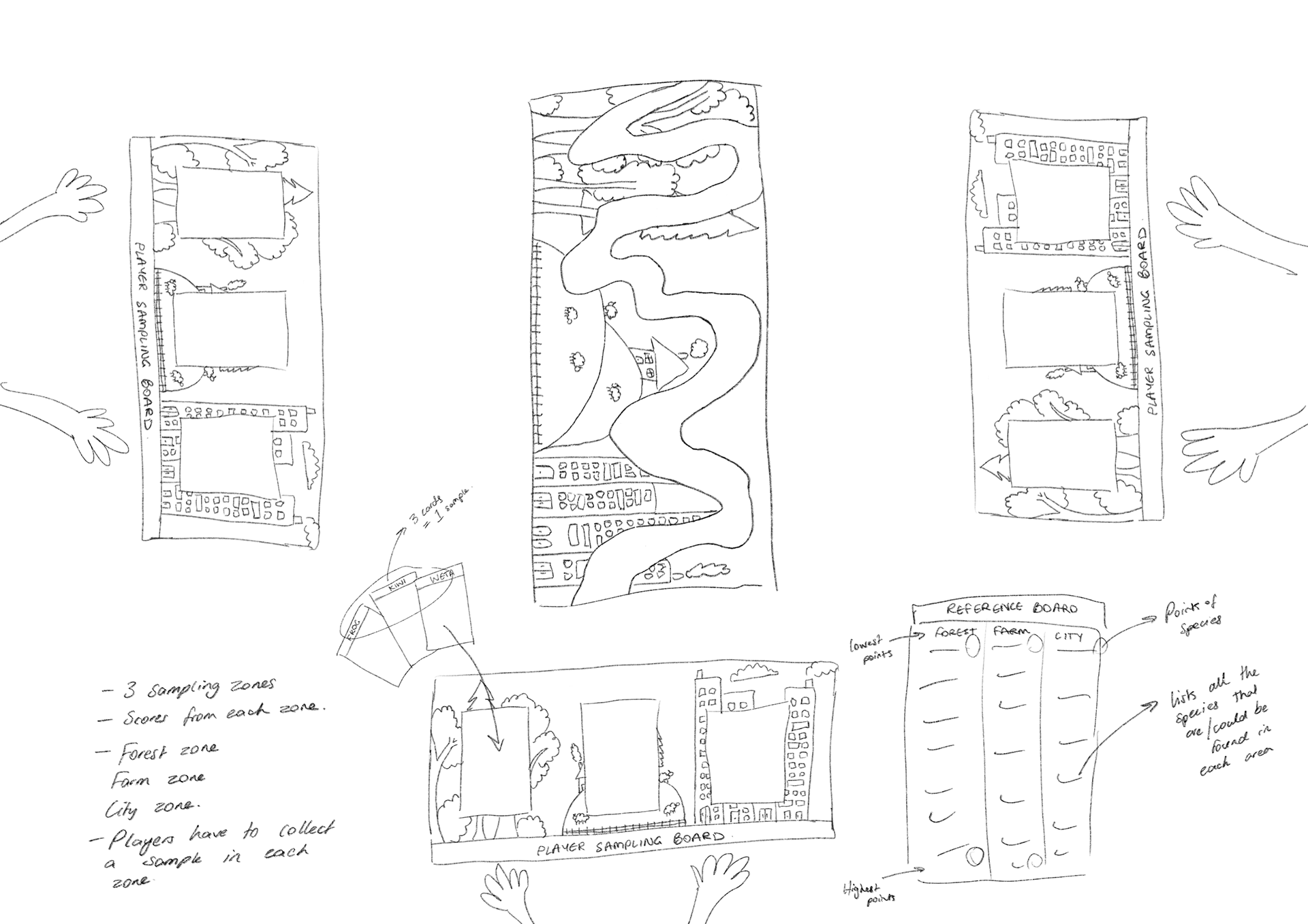
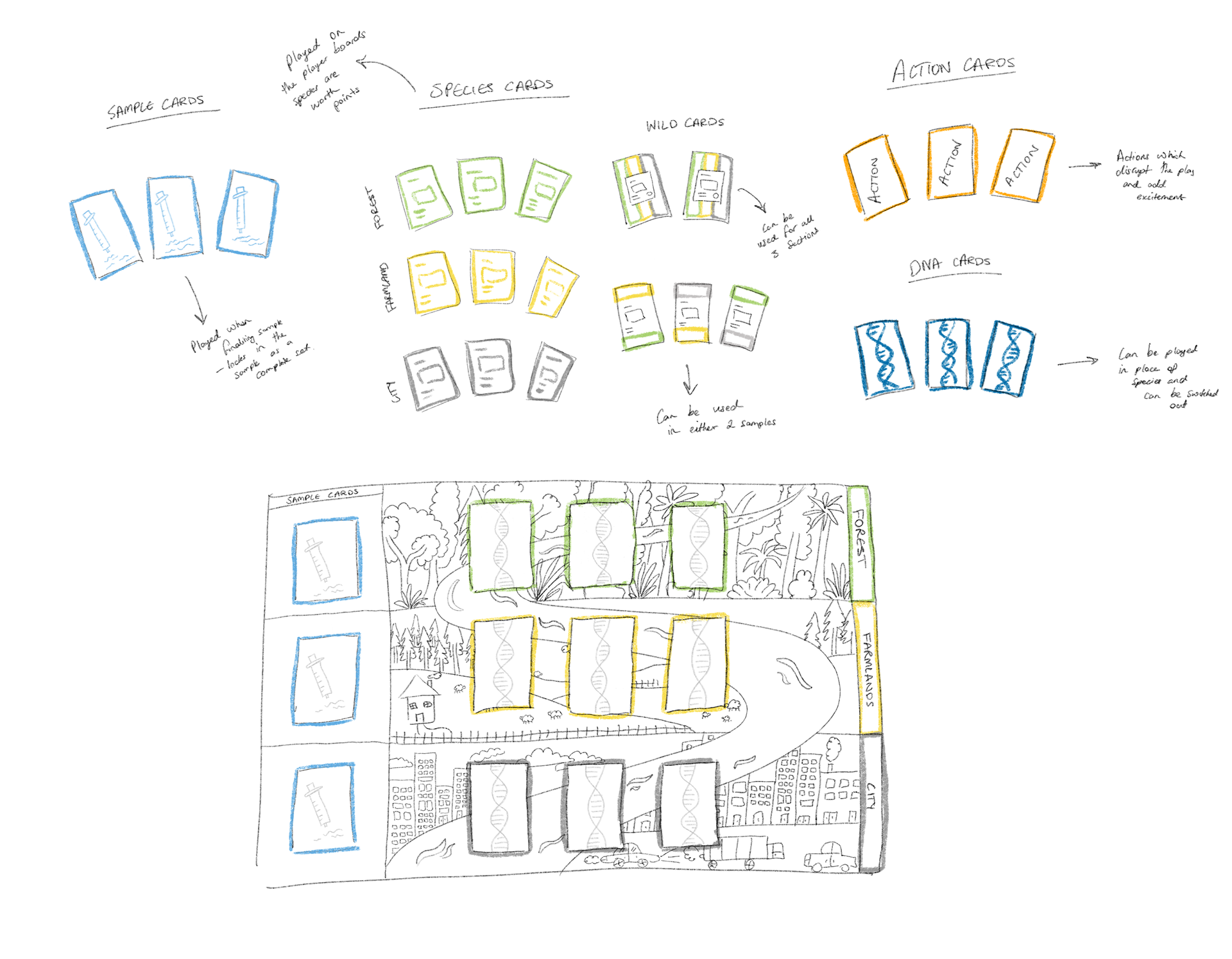

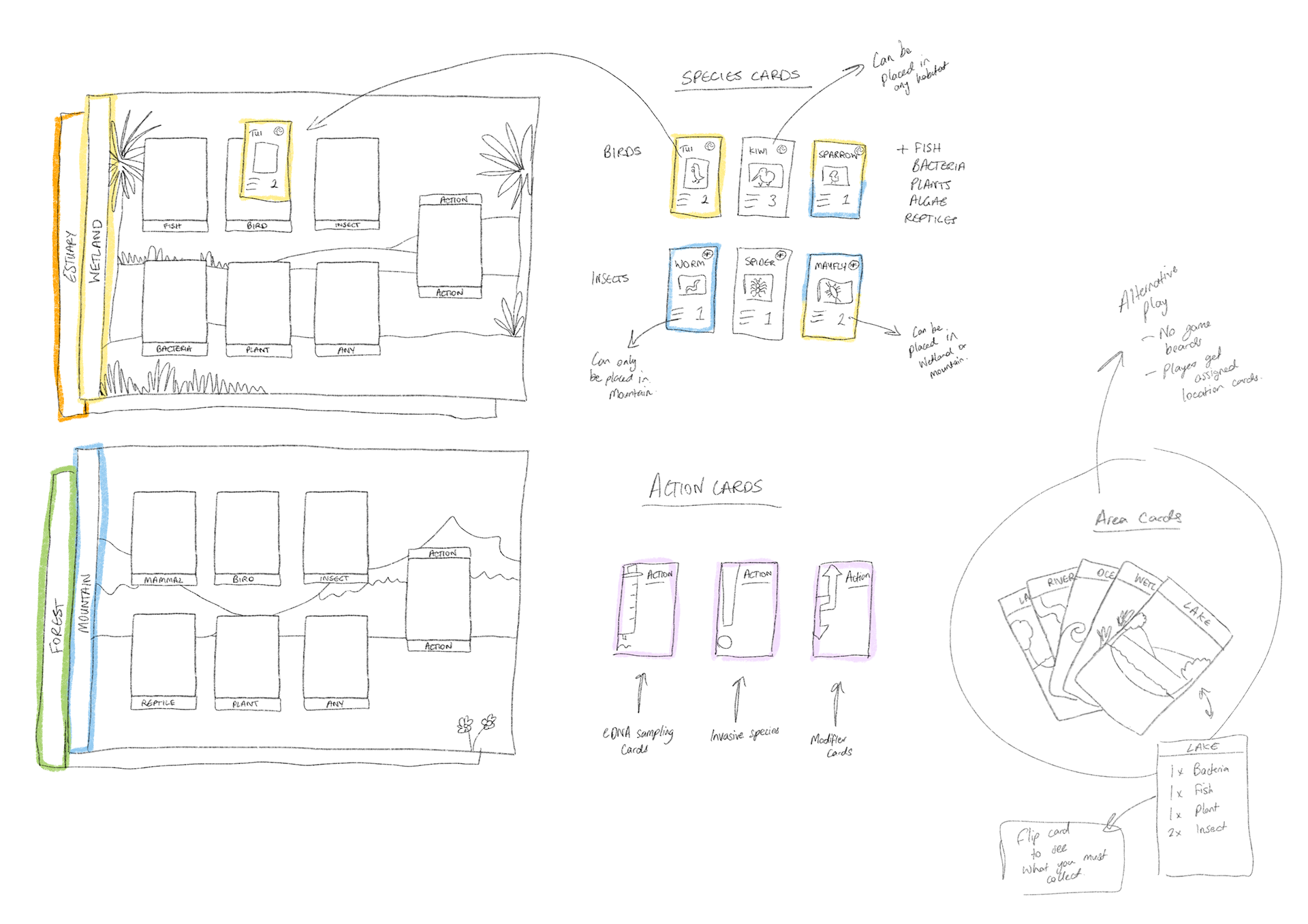
Prototyping
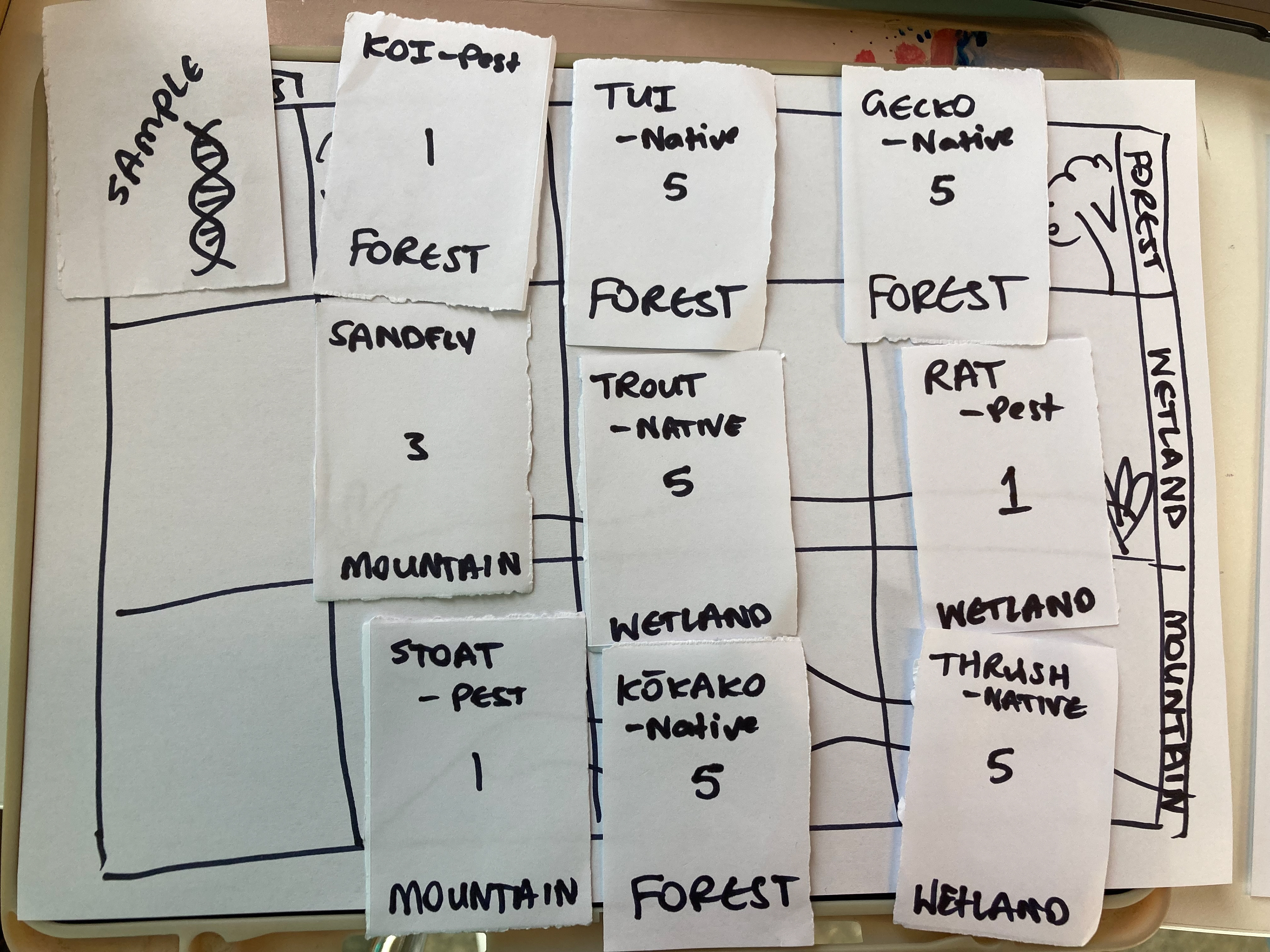
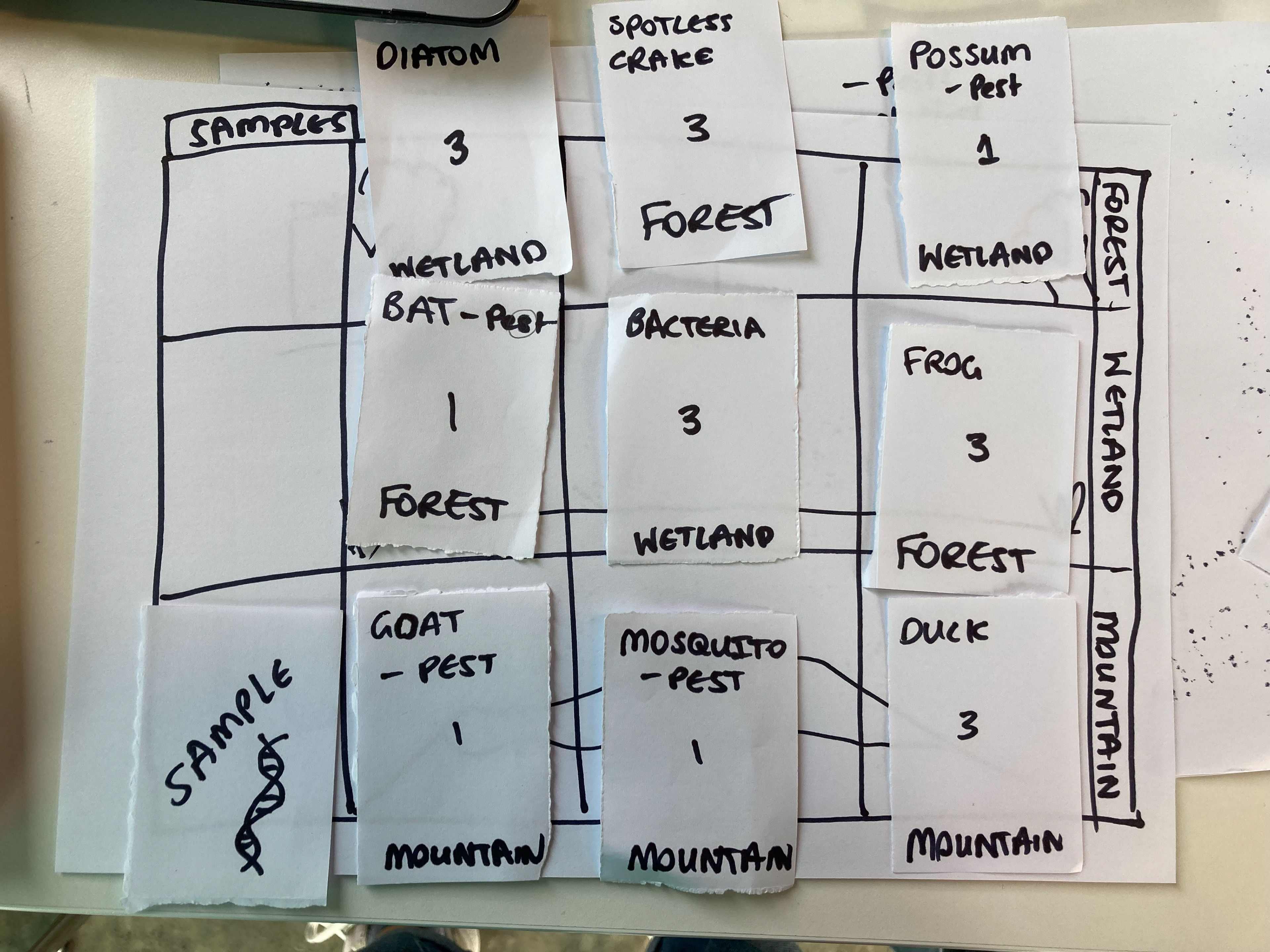
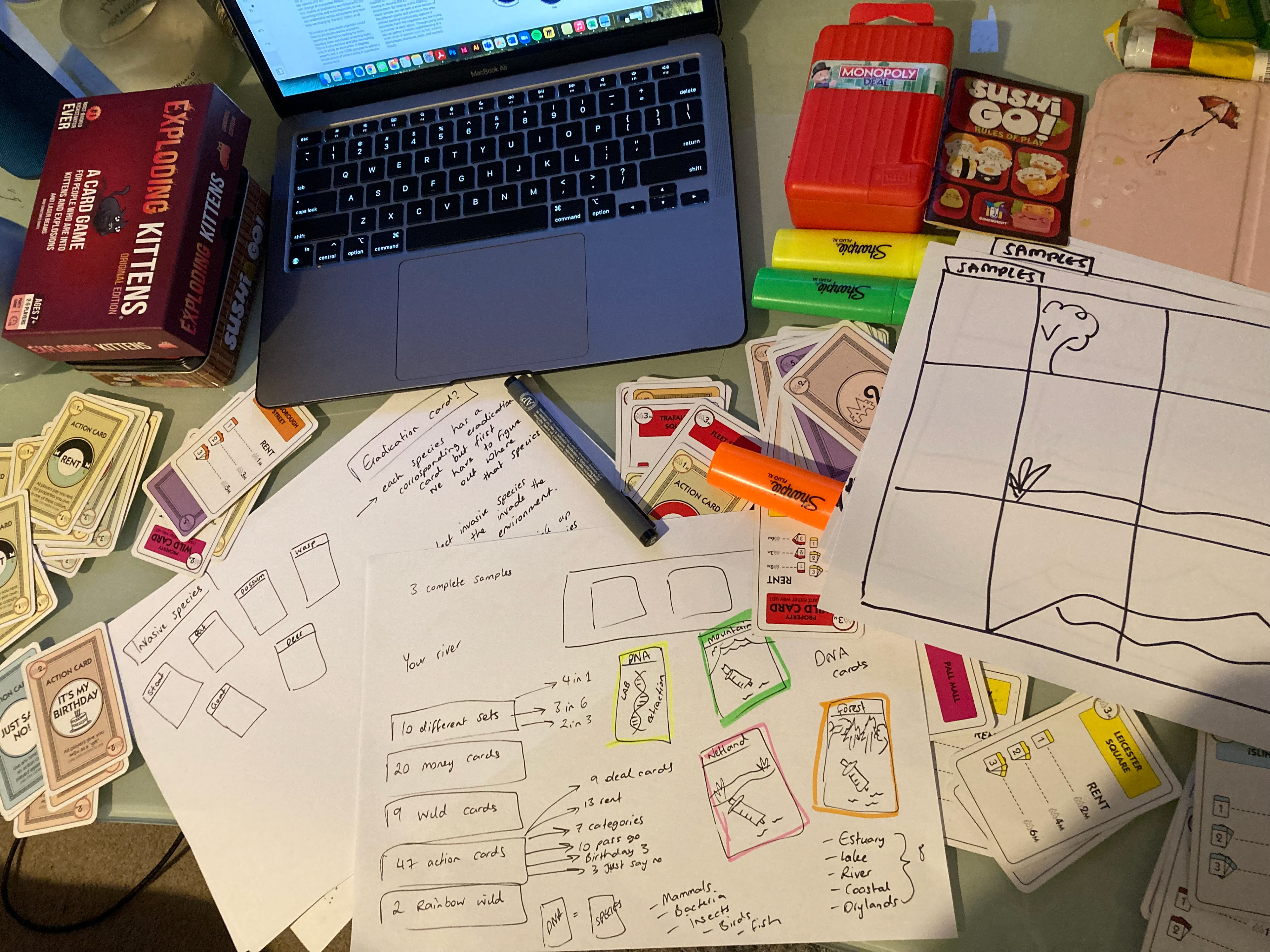

Visual Design Exploration


Card Design Development


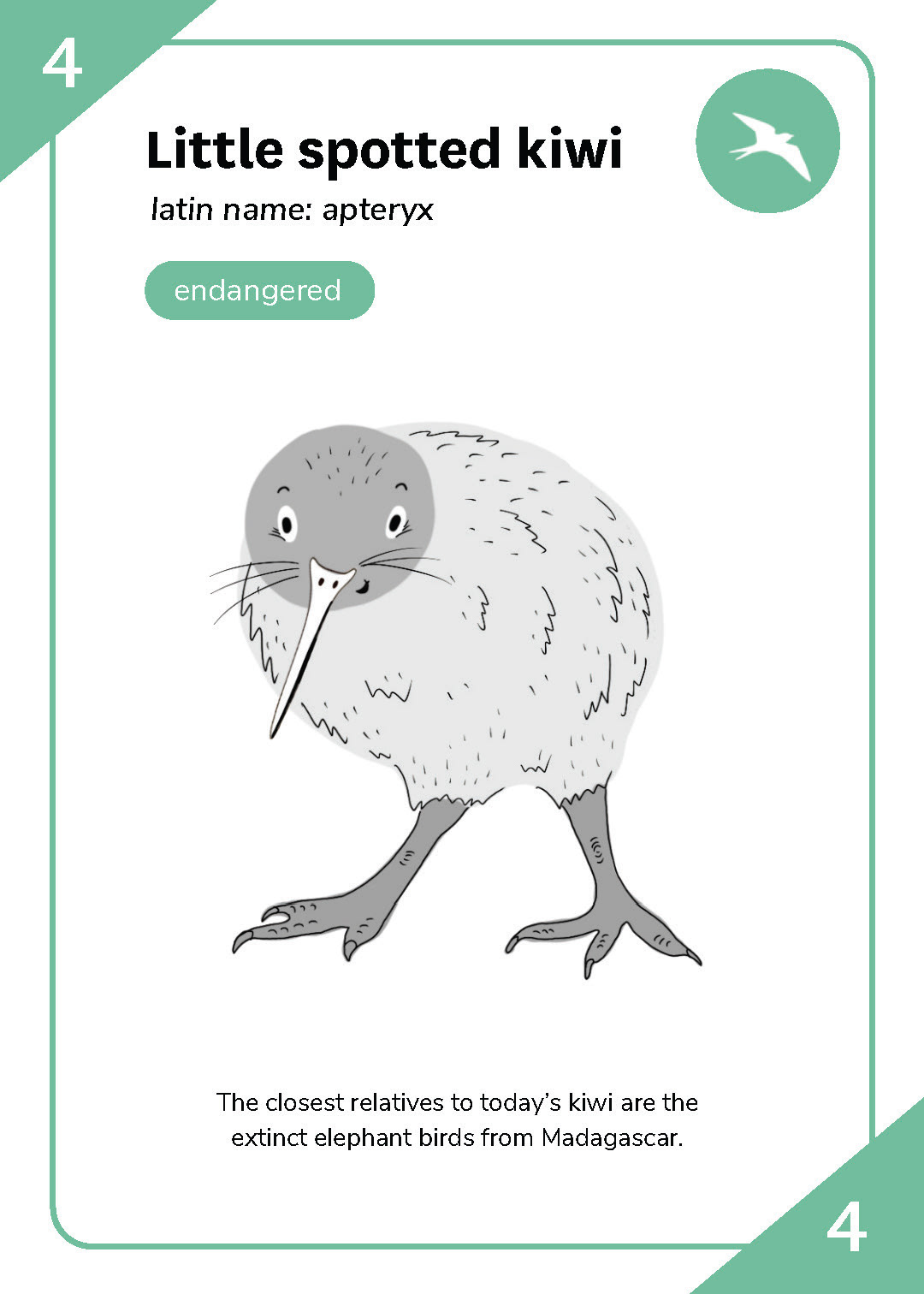



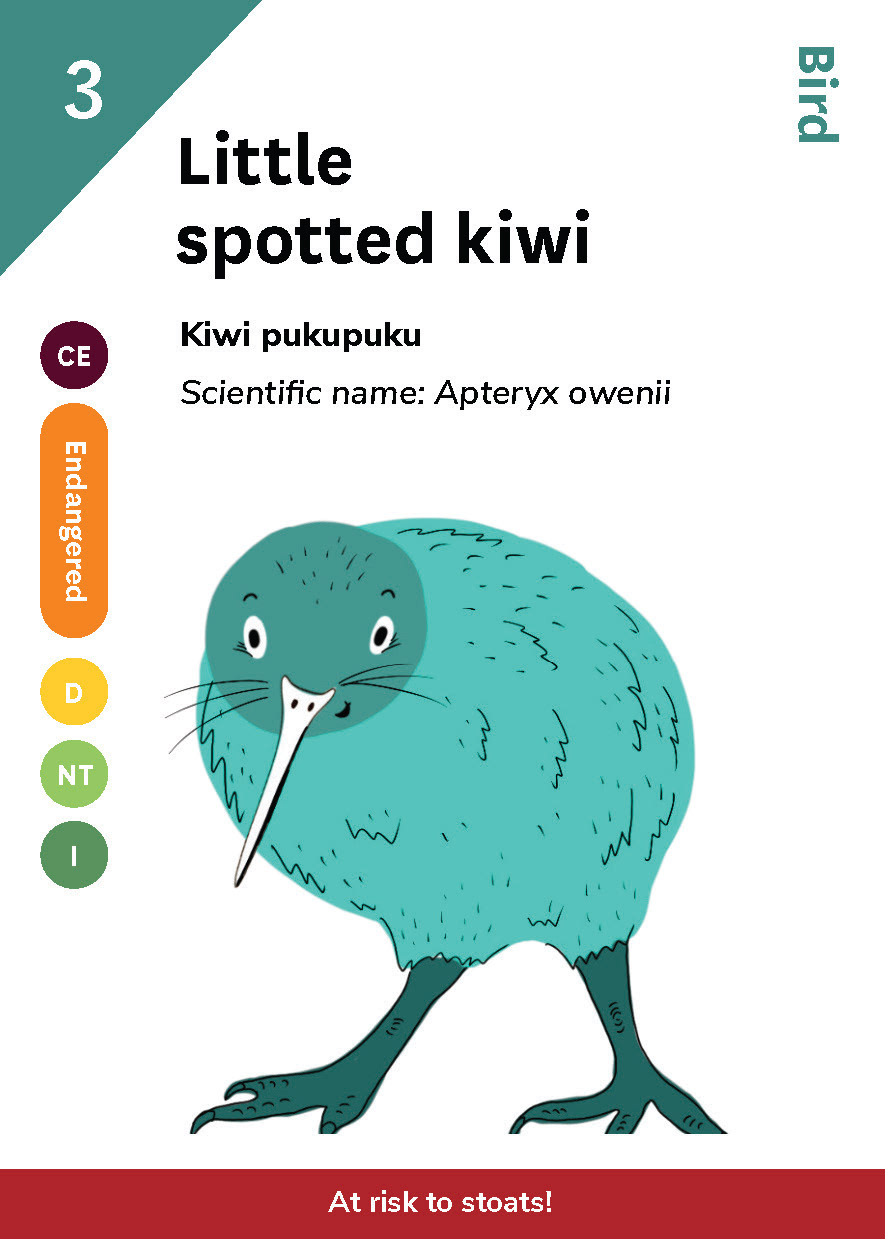

User Testing
& Prototyping
& Prototyping
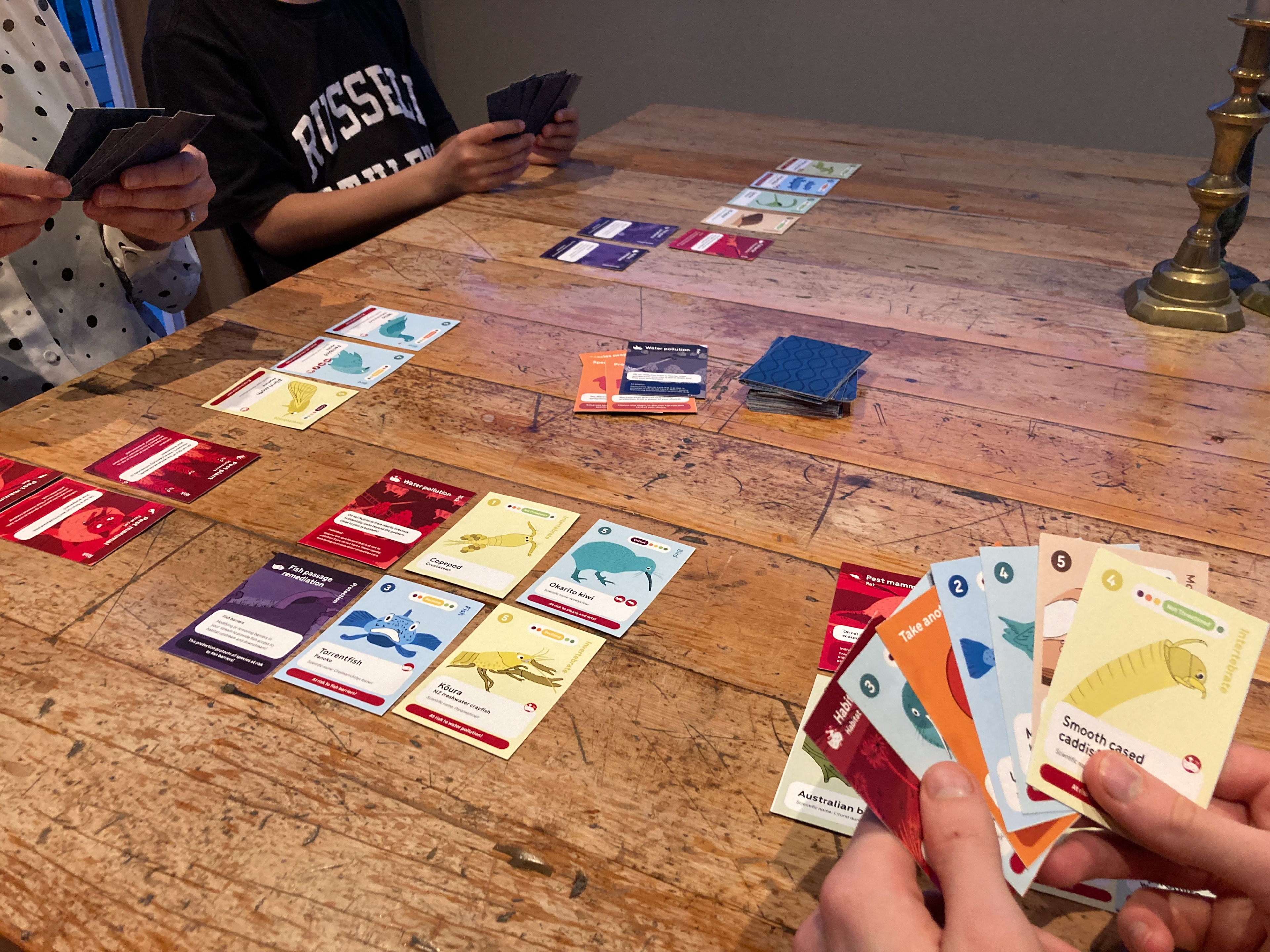
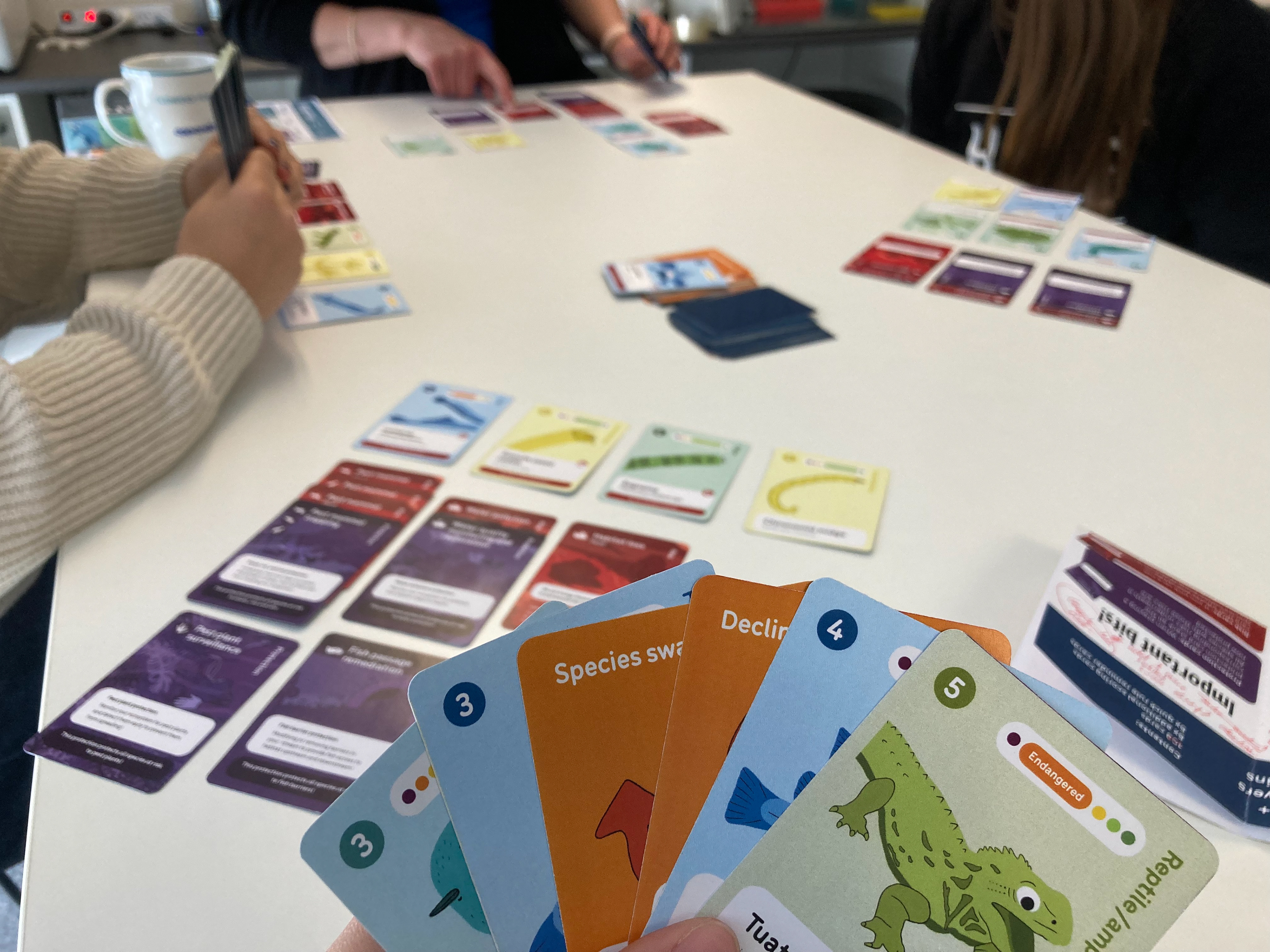




After designing the instruction sheet and gameplay, I gave a copy of eRangers to my workmate to play with her kids, and to my other workmate to play with her flatmates and tested it with the kids that I frequently babysat. I wanted to see if a range of kids could easily play it from reading the instructions. The feedback I received from these tests was super helpful as it meant I could develop and adapt the rules to the user's experience, reflecting on particular situations that came up when they were playing the game.
Delivery
Learning outcomes: eRangers gameplay covers four specific learning outcomes
1. Biodiversity: The species cards teach all the different species that eDNA detects in freshwater ecosystems.
2. Risks: The risk cards teach the threats to which the species are at risk. These correspond to the species cards.
3. Threat status: The species threat status is based on the NZ Threat Classification System. This is shown on the species cards and helps to give context to the scoring of the cards.
4. Protection programmes: The protection cards which protect the species from risks give context and provide real solutions.


